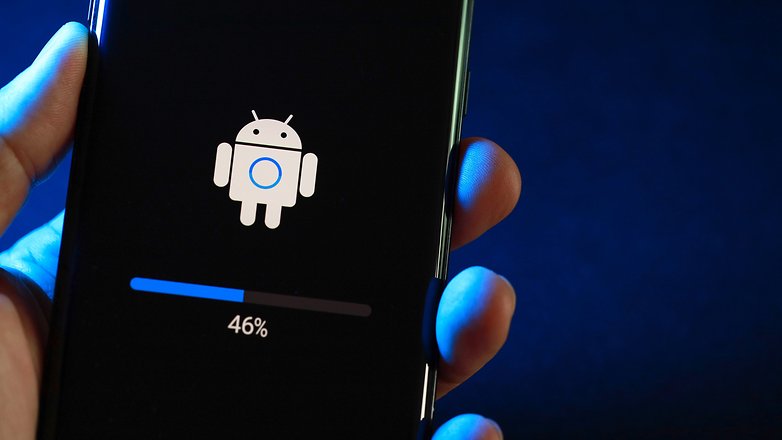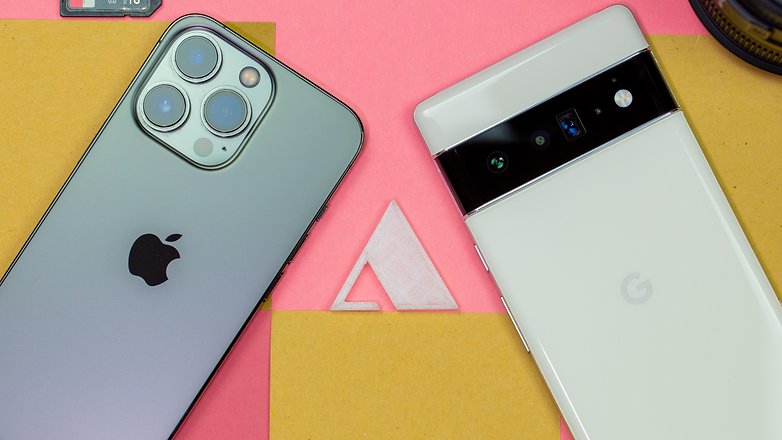A new year always means a new beginning. Today begins a new cycle that is associated with many expectations and hopes. As tech experts and enthusiasts, our team has created a list of what we want to see in the tech industry in 2022. It is not about predicting the future, but rather predicting our ideas of a better world of technology.
After discussions with all members of the multicultural editorial team at NextPit In the following, I would like to show what we want for our industry in 2022.
1. The end of the chip shortage
Let’s talk about consumption! The law of supply and demand determines the final price of technology products. We could see that very well in 2021. Because of the scarcity of hardware parts, companies like Apple were preferred to less relevant companies. Even so, the giant company was forced to cut production of the new iPhone 13.
Consoles like the Play Station 5 and the Xbox Series X / S are still hard to find on the market. And those who could already buy them resell the products at a much higher price. Nvidia, too, saw its graphics processors reach their highest market value in 2021 due to this hardware limitation. As a passionate gamer, Zois sees the end of the chip shortage at the top of the list of expectations for 2022.
Here, however, not only access to products is a relevant factor, but also the widening technological gap between industrialized and developing countries and between the layers in the respective countries. And the chip shortage is still a consequence of the first waves of the corona pandemic.
So if my colleague Casi wants Apple to launch and sell Apple Glass augmented reality glasses in 2022, it is important that the shortage of hardware parts in the market end this year.
2. New technologies
Front cameras under the screen of all mobile phones, high-quality lenses on the main camera of mid-range smartphones, foldables at more affordable prices, long Android updates and security updates that break through the flagship bubble – in short, the use of these new technologies in all smartphones is the bet Which my colleagues Florian, Antoine and Casi are counting on for 2022.
The last year was the year that foldable smartphones became real purchase options. However, they are still sold at high prices and rarely feature high-end hardware specs. With the launch of the new Oppo Find N and the teasers for the Honor Magic V at the end of 2021, the industry finally seems to be getting involved with foldable smartphones.
Will foldable smartphones be more affordable in 2022? We hope so! / © NextPit
Now the expectations are directed towards Google and the suspected foldable Pixel as well as the next generation of the Galaxy Z-Flip and Z-Fold series. And in the opinion of our junior editor Florian, Xiaomi could be the brand that popularized this category of mobile phones. Do you agree with him?
3. A drastic change towards sustainability
Although we don’t always talk about sustainability issues or criticize greenwashing by technology companies, our employee meetings often heat up when it comes to sustainability. Since we deal with consumer products on a daily basis, our team is constantly confronted with questions such as the best technology, best value for money, planned obsolescence, and long-term maintenance of a device.

Can Fairphone devices become the new sexy phones? / © NextPit
However, as my colleague Ben rightly pointed out, “Smartphones can no longer be super cheap and difficult to repair”. Access to technology must remain affordable, but we also need to be aware of the impact of so-called fast tech on the environment.
We hope that more companies will offer the right to have their products repaired and that there are of course options beyond the high-end mobile phones. In the future, we have to shift the focus on technology, because faster, better, more attractive can no longer be the only definition of great technology. How about we start this process now, in 2022?
4. Less error-prone products
The technology industry continues to develop through experience. One of our great expectations is therefore the provision of “finished” products with less error-prone operating systems and, of course, more long-term support. In 2021, we saw too many operating system update bugs that not only affected the user experience but also led to critical data breaches.
Another expectation from our team is more standardization of product names and less rebranding of cell phones. My colleague Rubens understands the necessity and importance of offering segmented and regionalized products. But he is of the opinion that the industry is losing control. And that a review of the naming policy should take place in 2022.

Software updates need to be more consistent in 2022 / © TY Lim / Shutterstock.com
5. Industry should adhere to deadlines
Large events were announced and canceled between 2020 and 2021. The events industry has yet to figure out how to deal with the restrictions imposed by the COVID-19 pandemic. And that ultimately had an impact on new product launches.
One of Dustin’s big wishes is that Gamescom takes place again and that the tech companies can meet their deadlines again. Big tech fairs like CES, MWC and IFA have been struggling for three years to find a “hybrid way” to keep the events going. But there is still no real solution.
With that in mind, the year unfortunately begins with another frustrating edition of CES in Las Vegas. The organizers of the fair relied on a face-to-face event, but had to find out that the number of Companies that canceled their participation, increased. With this in mind, we keep our fingers crossed for the industry that all product launches planned for early 2022 will take place.
6. Better pandemic control solutions through Tech
The year is 2022 and SpaceX has already planned private space flights for January. But we still haven’t reached a consensus on how to use the existing technology in our devices to turn this pandemic into endemic. In this context, my colleague Stefan Moellenhoff hopes that we can use the available technological resources as a means of overcoming pandemics.
In 2020, location services using solutions such as GPS and Bluetooth will be deployed to detect high-risk interactions. But they are far from being accepted by everyone. In addition, most wearables already enable the measurement of resting heart rate, skin temperature and sleep behavior and could therefore help in the early detection of disease outbreaks.
These and other solutions for using anonymized data have been around since 2017, as we learned in the following interview with Withings founder and then Nokia Health CEO Cedric Hutchings. However, the lack of information and / or the lack of transparency in the processing of this data may limit the use of such technologies. Stefan therefore expects that in 2022 we will find more creative solutions to contain COVID-19 using the technology available in our devices.
7. The development of computer-aided photography
Last year we saw how Apple introduced Cinematic Mode for the iPhone 13 series and how Google switched to computational photography for pictures and videos on the new Pixel 6. Xiaomi showed the Cinemagic and Samsung brought a lot of new camera features to the Galaxy S21.
And while computational photography still sounds like a buzzword, we expect that technology will continue to evolve in 2022. Our photo and video expert Stefan Möllenhoff believes that it will be the driving force behind the computing power in mobile phones. This will enable us to combine several recordings not just from a single camera, but from several cameras.

Google and Apple will continue to be driving forces in computational photography next year! / © NextPit
Although the camera sensors in today’s smartphones have gotten bigger and bigger, the physics is and will remain a limiting factor in these devices. The ever decreasing depth of field will pose a problem for the computer photography algorithms that process the images.
If you ignore alternatives such as focus stacking or light field cameras, the Nokia 9 Pureview showed us a solution to this dilemma at the beginning of 2019, which in the end suffered greatly from immature algorithms and insufficient computing power: sensor arrays.
However, after three years and continuous developments in this area – especially in the second half of 2021 – we believe that the year 2022 will be dominated by computer-aided photography.
8. More awareness of data protection
In 2021 there was a big debate about WhatsApp’s new privacy policy! Apple has also made a bold decision in terms of data protection and introduced the “app tracking transparency” function with iOS 14.5. Since then, iOS app developers have had to ask permission to track our activity in apps and on other companies’ websites.
With Android 12, Google also increased the transparency of the operating system by introducing features such as the Privacy Dashboard and the Android Private Compute Core.
What these three cases have in common is that they help to raise awareness of the importance and sensitivity of personal data on the internet. Since the past year was also marked by the appearance of the NSO Group’s spyware Pegasus, my personal high expectation for 2022 lies in actions that trigger even more discussions on the subject of data protection and security.
Conclusion
As I said at the beginning of the article, this list is not the result of futuristic analysis, nor is it intended to predict what the year 2022 holds in store for us. Our intention is to start a debate about a better tech industry.
It’s too early to say if our ideas are realistic. But I hope that by the end of this year we can come back to this article and find that in some ways we have moved on. What about you?
What are your expectations for 2022? Share your thoughts with our community in the comments below.
